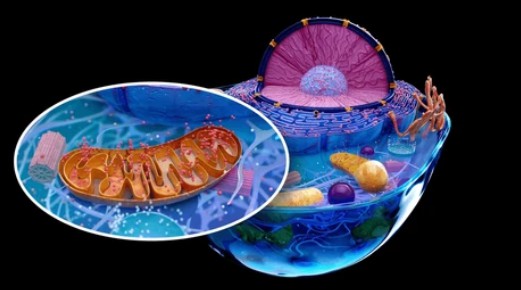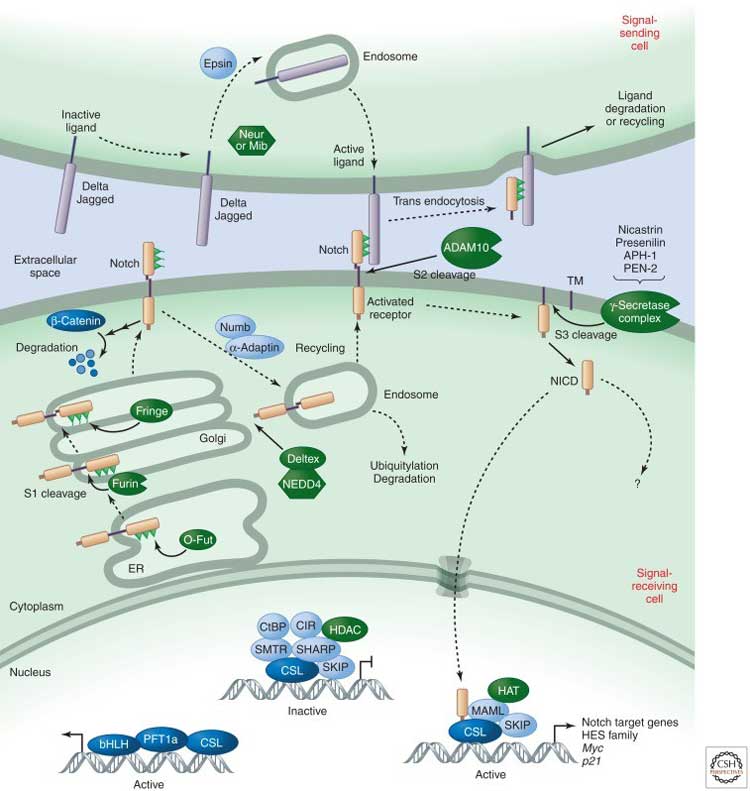Notch Pathway
About Notch Pathway
The Notch signaling pathway is widespread in vertebrates and invertebrates, is evolutionarily conserved, and regulates the differentiation and development of cells, tissues, and organs through interactions between neighboring cells. in 1917, Morgan and colleagues discovered the Notch gene in mutant Drosophila, whose partial deletion of the gene resulted in a notch at the edge of the Drosophila wing, hence the name.
The Notch pathway consists of four components: Notch receptors (Notch1/2/3/4), Notch ligands (Delta-like ligands, DLL1/3/4; Jagged ligands, JAG1/2), CSL-DNA binding proteins, and downstream target genes (Hes family, MYC, etc.). Alterations in any of these 4 factors will have an impact on Notch signaling. Mammals have 4 Notch receptors (Notch1-4) and 5 Notch ligands (Delta-like 1, 3, 4, Jagged1 and Jagged2).
Notch signaling is generated through the interaction of Notch ligands and receptors in neighboring cells. Notch proteins undergo three times shearing, are released into the cytoplasm from the intracellular segment (NICD), and enter the nucleus to bind with the transcription factor CSL to form the NICD/CSL transcriptional activation complex, which activates the basic-helix-loop-helixes (bHLH, such as HES, HEY, HERP) transcriptional repressor family target genes and play biological roles.

Mechanism of Notch Pathway
The Notch pathway functions through a series of interactions between Notch receptors (Notch 1-4) and their transmembrane ligands (Jagged 1 and 2, Delta-like 1, 3, and 4). Upon ligand binding, the Notch receptor undergoes proteolytic cleavage, releasing the Notch intracellular structural domain (NICD), which translocates to the nucleus and forms a complex with transcriptional co-activators such as Mastermind-like (MAML) proteins. This complex activates the transcription of target genes involved in key cellular processes.
The Notch pathway also involves crosstalk with other signaling pathways, such as the Wnt, Hedgehog, and TGF-β pathways, affecting cell fate decisions and cellular responses. Understanding the complex mechanisms of the Notch pathway and its interactions with other signaling networks is essential to elucidate its role in various biological processes.
Functions of Notch Pathway
- Developmental Biology
The Notch pathway is essential for embryonic development and regulates cell fate decisions, tissue patterns, and organogenesis.
- Cancer Research
Aberrant activation of the Notch pathway has been linked to many types of cancer, affecting tumorigenesis, progression, and metastasis. Investigating the underlying mechanisms and therapeutic potential of targeting the Notch pathway is critical to cancer research.
- Stem Cell Research
The Notch pathway plays a critical role in the maintenance and differentiation of stem cells. Manipulation of the Notch pathway can drive the differentiation of stem cells into specific lineages or maintain their undifferentiated state.
Research Tools for Notch Pathway
The Notch pathway is a key regulator of development, stem cell function, and disease progression. Creative BioMart offers a wide range of resources, products, and services related to the Notch pathway to support research in developmental biology, cancer biology, and stem cell biology. Through these comprehensive offerings, scientists can gain insight into the mechanisms and therapeutic potential of the Notch pathway to advance biomedical and drug discovery. Click to view all related molecules/targets and research reagents. Please get in touch with us with any questions or requests.
 Fig.1 Notch signaling. (Kopan R, et al., 2012)
Fig.1 Notch signaling. (Kopan R, et al., 2012)
References:
- Kopan R. Notch signaling. Cold Spring Harb Perspect Biol. 2012 Oct 1;4(10):a011213.
- Zhou B, Lin W, Long Y, et al. Notch signaling pathway: Architecture, disease, and therapeutics[J]. Signal transduction and targeted therapy, 2022, 7(1): 95.


